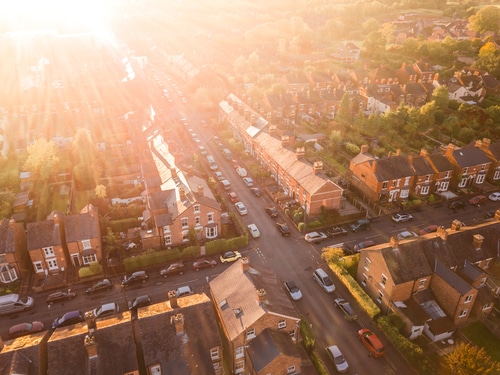The government proposed street vote is part of a new plan from the government whereby neighbours could be given a vote on whether planning permission is granted for developments on their street.
Neighbourhoods across the UK are going to be given the right to allow building developments on their street if they comply with certain design rules. After a community referendum, developments will only be given the green light and planning permission if the project is endorsed and supported by majority of the votes.
In the Queen’s speech in May, it was discussed that people will be given the opportunity to be more involved in local development as part of the Levelling Up and Refernation Bill, including measures such as street votes. If done successfully, it will hopefully mitigate fears over unwanted gentrification, which for example could see valued local buildings torn down.
What is the Levelling Up and Regeneration Bill (and what does it mean for me)?
The Levelling Up and Regeneration Bill was created with the aim to drive local growth, empower leaders to regenerate areas and ensure people from across the UK can share in the success. The bill holds four broad objectives:
- Boosting productivity, pay, jobs and living standards by growing the private sector
- Spreading opportunities and improve public services
- Restore a sense of community, local pride and belonging
- Empower local leaders and communities
Overall, the bill intends to improve the planning system within the UK to allow for communities to have a louder voice and make future developments green, beautiful and accompanied by new infrastructure and affordable housing for all. With this in the works, it suggests that the government is prepared to act to achieve it;s housing delivery targets.
Who could the government proposed street vote impact?
The Government Proposed Street vote is going to impact councils, housing and SME developers and members of the public as the new plans create new steps to allow planning permission for builds within the community. It will put local people in charge of their communities and strengthen neighbourhoods across the UK. However, for the start of the project, the street vote will only be available for brownfield sites, sites that have been used before and are now disused or derelict land.
What are the pros of the government proposed street vote?
The involvement of the public within the Government Proposed Street Vote is favoured by many. As stated by Michael Gove,
“Arithmetic is important but so is beauty, so is belonging, so is democracy, and so is making sure that we are building communities. People, when it comes to housing development, should be partners. We are going to do everything we can in order to ensure that more of the right homes are built in the right way in the right places. I think it is critically important that even as we seek to improve housing supply you also seek to build communities that people love and are proud of.”
In addition, Policy Exchange Think Tank, who proposed the idea last year, have found that an adopted ‘street plan’ could increase the value of residents’ homes across the country. They said:
“Residents of a street should be able to agree by a high majority on new strict rules for designs to make better use of their plots. A street of suburban bungalows, for example, could agree on the right to create Georgian-style terraces. In many cases, an adopted ‘street plan’ would greatly increase the value of residents’ homes, giving them strong reasons to agree on it.”
What are the cons of the government proposed street vote?
However, there are some who are very wary of this new proposal. As stated by Theresa May:
“I can well imagine a situation in which somebody persuades their neighbours in a street to agree to the sort of development that might enhance the value of their houses but which actually has a negative impact on the wider community and wider neighbourhood.”
Whilst the vote will provide neighbours with more say in what is happening within their area, there could be a negative impact for small builders. As stated by Brian Berry, Chief Executive of the Federation of Master builders,
“We must be cautious that greater community involvement, in measures such as local plans, doesn’t disrupt delivery and create more unnecessary burdens for small builders. Developments are complex, and often the loudest, not necessarily most sensitive voices are heard.”
In addition, there’s some worry that there’s some missed opportunities on climate change and sustainable development within the new plans. Hugh Ellis, Policy Director of the Town and Country Planning Association said to inews:
“If you read the Bill, there are significant changes to the status of local development plans, to the use of new town and urban development corporations and to the quality and meaningfulness of environmental assessment. This represents a very big change to the operation of the current planning system. Some of this will centralise planning policy which is negative and there are huge, missed opportunities on Climate Change and Sustainable Development. If the Government is serious about rebuilding public trust in planning, then this will be welcomed but that is a much bigger project than this street vote idea.”
Whilst there’s some worries regarding the government proposed street vote and its overall impact, the government is insisting that residents will not be able to veto planning proposals and the bill will be watched and necessary amendments will be made if needed.
What happens next?
And that’s all we know so far! As soon as we get further information on the proposed street vote, we will make sure to keep you up to date with any changes, release dates and impacts within the industry. To keep in the loop, make sure to give us a follow on social media or subscribe to our email for updates.





















